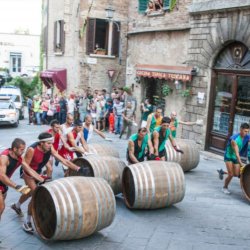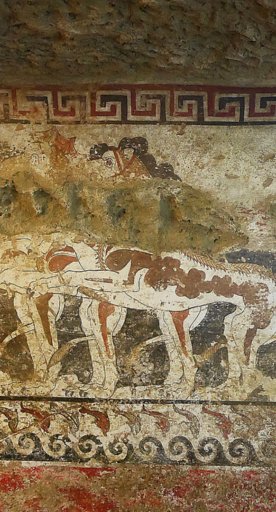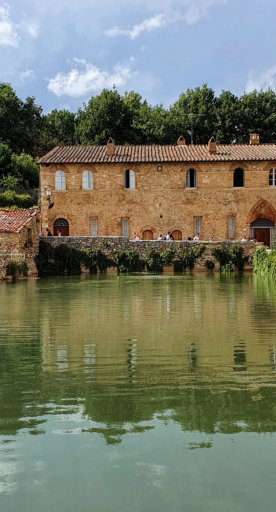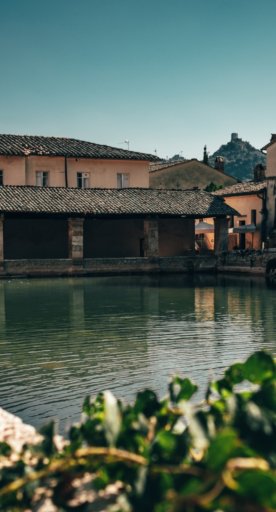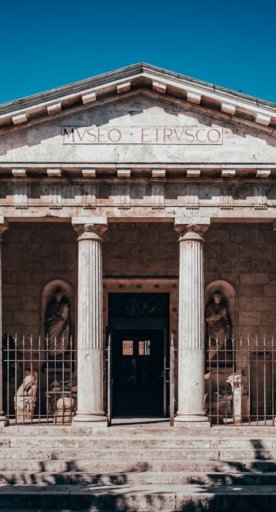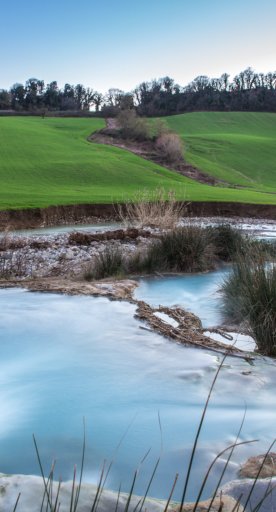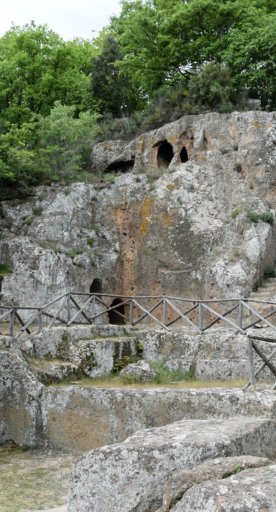
Contemporary architecture: the buildings that cannot be missed in Tuscany
Discovering the buildings erected by the masters of international architecture amongst wine cellars, museums and contemporary spaces
For many synonymous with the distant past and the Renaissance, Tuscany has been chosen by contemporary artists, national and international, as a place to set their creativity free. That’s why the region is full of gardens and parks of sculptures, museums and private collections, in addition to impressive architectures, among which the fascinating designer wine cellars.
In this article, we have selected some among the most surprising buildings for general public and institutional use erected from 1945 until today.
-
1.The new cathedrals
-
2.Museums and not only museums
-
3.Designer wine cellars
The new cathedrals

Among the first examples of contemporary architecture in Tuscany, there’s the spectacular ceiling of the Salone Nervi inside the complex of the Baths of Chianciano. Built in 1952-53 by Pier Luigi Nervi, it looks like an elaborate embroidery of white circular cement that, from the center, expands lightly as if pushed by a centrifugal force.
Another important example is the Church of St. John Baptist in Campi Bisenzio, better known as the Church of the Highway by Giovanni Michelucci. Built between 1961 and 1964, it was conceived as a religious stop for those traveling along the highway, recalling a typical tent of nomadic peoples with its innovative concrete 'inverted' vault.
Last by date of completion is the Teatro del Maggio Musicale Fiorentino which, in 2014, was awarded the National Prize for the best work of architecture built in Italy over the last five years. Located a few steps away from the Santa Maria Novella railway station and at the beginning of the Park of the Cascine, the building stands out for its great scenic tower visible 35 meters high.
Museums and not only museums

In Tuscany, more precisely in Prato, the first architecture made in Italy to house contemporary works of art, i.e., the Center for Contemporary Art Luigi Pecci, from the futuristic form of a huge gilded spaceship built with the intervention of Maurice Nio in 2016. Again in Prato, it is possible to visit the ancient Cimatoria Campolmi, a nineteen-century factory turned into a multi-purpose building, which today houses the Museum of the Museo del Tessuto (Textile Museum) and the Library Lazzerini.
In Florence, the Archivio di Stato (State Archive) by Italo Gamberini cannot be missed. It’s a modern fortress dating back to the time of the Medici and overlooking the city avenues built between 1927 and 1988, and the new exhibition route of the Museo degli Innocenti located in the former Spedale degli Innocenti in Piazza Santissima Annunziata, which opened in 2016.
Also worth a visit is the bank in Colle Val d’Elsa, built by Giovanni Michelucci and Bruno Sacchi between 1973 and 1983, with its bright red, the Casa Esagono (1957) by the Florentine architect Vittorio Giorgini in the pine forest of the Gulf of Baratti, which looks almost like a wooden spaceship in hexagonal modules suspended among the trees, and the original Atelier “SpaceXTime” in Montelupo Fiorentino, the artist Marco Bagnoli’s studio, built between 2007 and 2017.
Designer wine cellars

From the Chianti Classico to Maremma, there are many designer wine cellars worth a visit.
Among these there’s the Wine Cellar Antinori in the Chianti Classico, which seems to melt with the hill behind it, the Wine Cellar of the Borro with its red bricks and the vaults that adapt to the rural style of the estate in Valdarno, and the wine cellar Petra designed by the architect Mario Botta to become and integral part of the view of the Costa degli Etruschi (Coast of the Etruscans).




